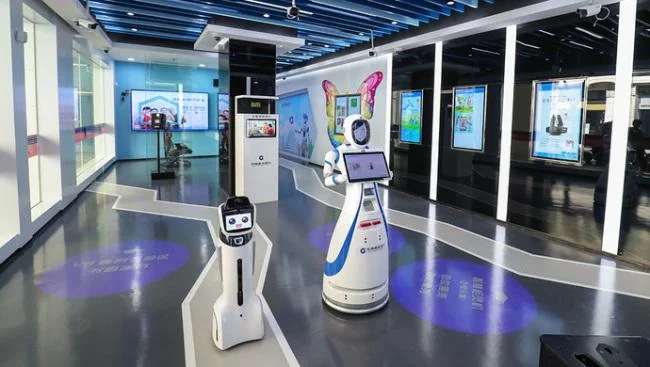Retail Banks Look to AR and VR to Stay Relevant
How some companies are rethinking modern retail banking
Fintech is on the rise and, in comparison, conventional models of retail banking are starting to seem dated. Now, traditional retail banks are looking to new technological developments in the fields of virtual reality, augmented reality, and robotics to build the retail banking experience of tomorrow. Some banks are adopting the new technology cautiously. But one bank in China has gone all-in, unveiling the country’s first unmanned retail banking branch.
China Construction Bank, a state-owned bank based in Beijing, opened the state-of-the-art facility in Shanghai this April. The branch boasts facial recognition software, a hologram machine, and talking robots. Entry is granted to bank customers after they’ve scanned their government-issued ID card or passed a facial recognition test. Touchscreen machines allow users to pay bills, buy gold, or exchange currency. Customers looking to invest in real estate can even use VR goggles to inspect potential properties. Of course, it’s not completely devoid of employees. The branch still uses (human) security guards. And VIP customers will be able to use a teleconferencing lounge to talk over more complex financial issues with bank staff.
Photo Credit: SHANGHAI OBSERVER
“These days, everyone is talking about banking or financial innovation,” says You Tianyu, vice president of research at the technology think tank iYiou, talking to the Associated Press. “This is kind of an experiment, a shot in the dark, trying to prove that traditional banks, too, can innovate.” Retail banking in China, and elsewhere, is under pressure to keep pace with fintech–Alibaba and Tencent are big players in China’s booming fintech sector–and to adapt to customers who have been quick and enthusiastic in adopting new forms of contactless payment.
Photo Credit: CHINA DAILY/ASIA NEWS NETWORK
While Shanghai’s “personless bank” has made quite a splash, many other institutions have been quietly experimenting with new technologies, like augmented reality, in an effort to stay relevant in the fast-changing financial sector. Australia’s Commonwealth Bank has launched an augmented reality app aimed at property investors. It combines geo-location technology with publicly available data, allowing users to download information on the spot. The National Bank of Oman has developed an AR app that locates its nearest branches and ATMs while also informing users of real-time news and offers.
Holographic technology, too, is getting an update. Banks have been using simple holographic technology to bolster security for years. Visa-users will be familiar with the silver dove image most cards bear: this is actually a white-light mirror-backed transmission hologram. Cheap and easy to produce, near-impossible to replicate, these security holograms make credit cards very difficult to forge. Now, banks are looking to more cutting-edge holographic technology to optimise their processes. Bankers often need to make quick decisions based on large data sets, goes the thinking at Citibank, which has provided Microsoft Hololens headsets to some employees. The headsets create holographic work stations where workers are easily able to visualise information and track data. A holographic retail bank, which allows its customers to ‘visit’ and talk with employees from their own home, is perhaps the next big innovation in store for retail banking.
Shanghai’s personless bank, with its robot concierges and VR goggles, certainly has novelty value, but retail banking would be wise not to dismiss it on this basis. According to Goldman Sachs, virtual and augmented reality will be an industry worth 80 billion dollars by 2025.
However banks choose to adopt it, one thing is clear: this new technology is here to stay.


